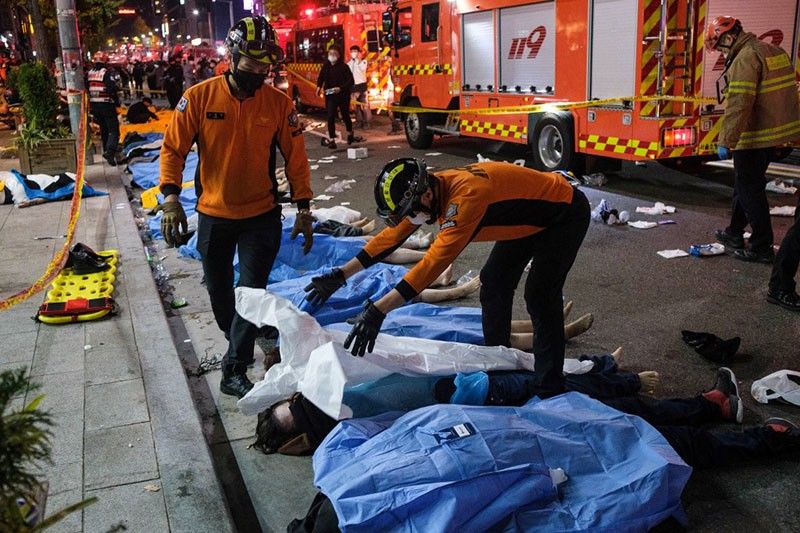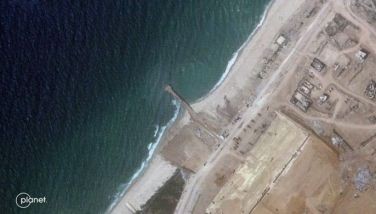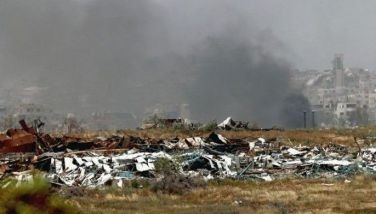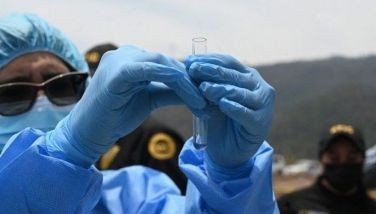South Korea's Halloween crowd surge: What we know

SEOUL, South Korea — South Korea is investigating the exact cause of a deadly crowd surge that killed 154 people at a Halloween event, as public outrage grows over perceived policing and crowd control failures.
What went wrong and why did so many people die at the first post-pandemic Halloween party in Seoul's popular Itaewon nightlife district?
Here is what we know:
What's going on?
The government promised a "thorough and transparent investigation" into the exact causes of the deadly crush in Itaewon, and police said Monday they had launched a task force and started the probe.
They've deployed forensic experts, seized footage from 50 security cameras in the area, and interviewed scores of witnesses, victims, and workers at nearby stores, according to a senior police officer.
How did it happen?
Typically, a gathering of over 1,000 people has to submit "safety management plans" to the government in advance for review by police and fire departments.
But in the case of the Itaewon Halloween festivities, there is no designated event organiser -- individual bars, clubs and restaurants simply hold their own events and people flock to the area.
Just weeks before, a "Global Village Festival" was safely staged in the exact same streets -- but it was an organised event sponsored by local authorities.
As a result, it had "effective crowd control with many police officers and district office staff in charge", said Kim Min-kyu, who runs a currency exchange shop near the site of the accident and saw both events.
Police have admitted to lapses in their real-time management of the event.
"Police officers on the scene didn't detect a sudden surge in the crowd," Hong Ki-hyun, chief of the National Police Agency's Public Order Management Bureau, told local reporters.
Why was it so bad?
Experts say the crowd crush could have been prevented with proper preparation, But they admit things have gotten more difficult after years of pandemic-related lockdowns.
"Everywhere in the world event organisers are struggling with the post-Covid crowd," said Eric Kant, a crowd safety specialist who runs the Phase01 Crowd Management.
"A lot of visitors are new with partying, they are indeed very excited, and maybe do not understand risks very much," he added.
Key risk factors for crowd surges are "unrestricted entry" of people into a small space, and "no ticket sales" which means organisers have no exact estimate of demand, experts say -- all of which happened at Itaewon.
"This is a recipe for disaster in mass gatherings," crowd safety expert Milad Haghani of the University of New South Wales told AFP.
Even for the Halloween event -- a public gathering with no tickets -- authorities could have been actively managing the situation to prevent overcrowding.
"On the day, this would mean monitoring the numbers, at the very least," said John Drury, an expert on crowd psychology at the University of Sussex.
"It would also mean a public information campaign beforehand to discourage such large numbers attending."
He warned that psychology studies show people actually seek out "objectively dangerous levels of density" at events, and organisers need to be aware of this risk.
Who is to blame?
So far, no one has been held accountable, even as public anger flares at the government and police for their apparent lack of oversight.
Top-ranking officials have brushed off questions about taking responsibility, saying the priority is currently on helping the victims and dealing with the aftermath of the accident.
Much local criticism has focused on the police -- but experts say they are not necessarily at fault.
"We should remember that the primary role of the police is generally not crowd management," said Martyn Amos, a professor at Northumbria University who works on crowd simulation.
"It's possible to manage an event largely using stewards, with the police there to ensure public order and to deal with criminal activity," he told AFP.
What happens next?
The government is under immense pressure to resolve this quickly -- and properly.
The opposition Democratic Party has already slammed the government's handling of the event, and will likely push for resignations once the national mourning period ends on November 5.
The Itaewon crush could deal another blow to President Yoon Suk-yeol's popularity ratings -- already at record lows.
There is also a possibility that the disaster, if mishandled, could become a major political liability for the government.
In 2014 then president Park Geun-hye was in power during the sinking of the Sewol ferry in which 304 people -- mostly school children -- died. She was widely criticised for her handling of the incident.
The issue lingered over her presidency until she was impeached three years later over a corruption scandal.
- Latest
- Trending


























